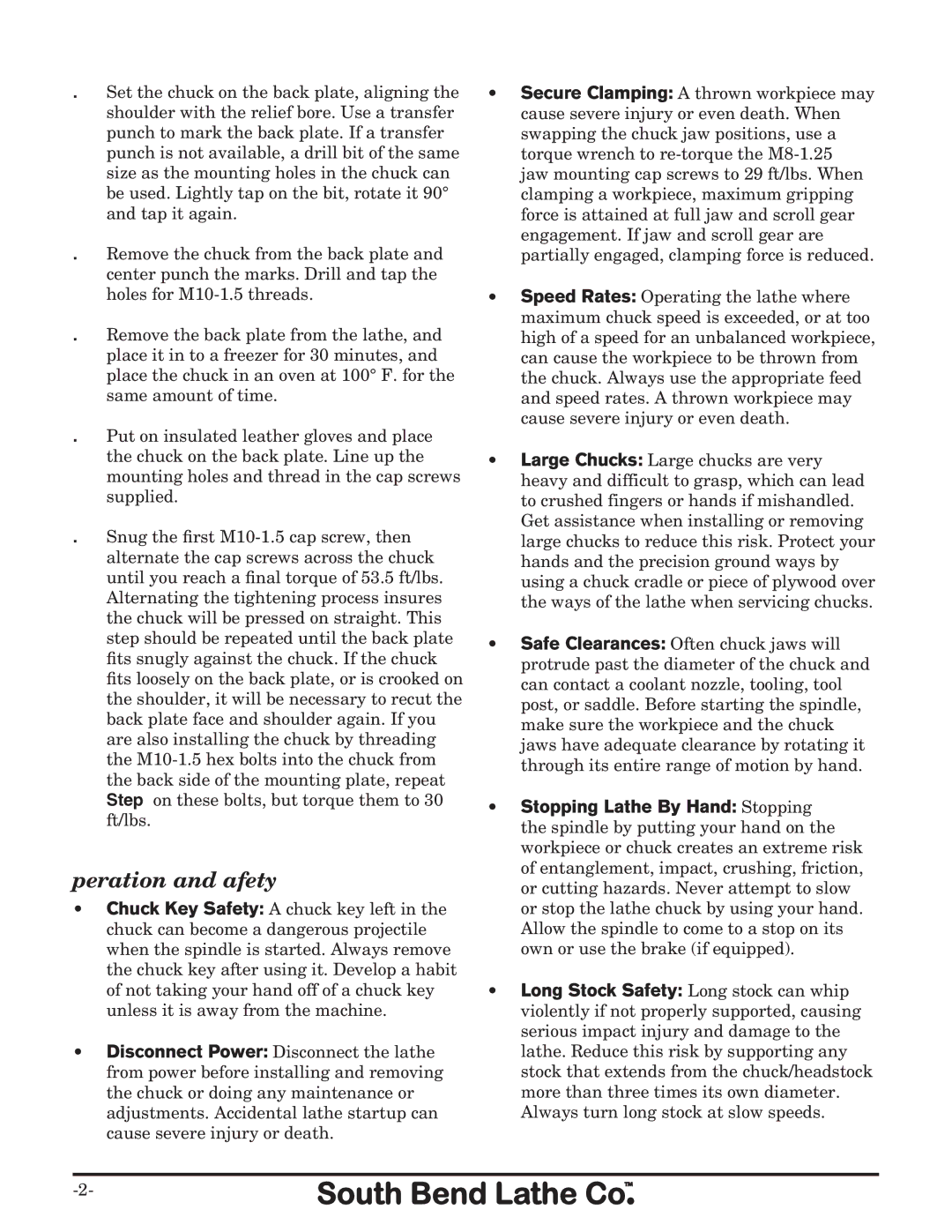6.Set the chuck on the back plate, aligning the shoulder with the relief bore. Use a transfer punch to mark the back plate. If a transfer punch is not available, a drill bit of the same size as the mounting holes in the chuck can be used. Lightly tap on the bit, rotate it 90° and tap it again.
7.Remove the chuck from the back plate and center punch the marks. Drill and tap the holes for
8.Remove the back plate from the lathe, and place it in to a freezer for 30 minutes, and place the chuck in an oven at 100° F. for the same amount of time.
9.Put on insulated leather gloves and place the chuck on the back plate. Line up the mounting holes and thread in the cap screws supplied.
10.Snug the first
Operation and Safety
•Chuck Key Safety: A chuck key left in the chuck can become a dangerous projectile when the spindle is started. Always remove the chuck key after using it. Develop a habit of not taking your hand off of a chuck key unless it is away from the machine.
•Disconnect Power: Disconnect the lathe from power before installing and removing the chuck or doing any maintenance or adjustments. Accidental lathe startup can cause severe injury or death.
•Secure Clamping: A thrown workpiece may cause severe injury or even death. When swapping the chuck jaw positions, use a torque wrench to
•Speed Rates: Operating the lathe where maximum chuck speed is exceeded, or at too high of a speed for an unbalanced workpiece, can cause the workpiece to be thrown from the chuck. Always use the appropriate feed and speed rates. A thrown workpiece may cause severe injury or even death.
•Large Chucks: Large chucks are very heavy and difficult to grasp, which can lead to crushed fingers or hands if mishandled. Get assistance when installing or removing large chucks to reduce this risk. Protect your hands and the precision ground ways by using a chuck cradle or piece of plywood over the ways of the lathe when servicing chucks.
•Safe Clearances: Often chuck jaws will protrude past the diameter of the chuck and can contact a coolant nozzle, tooling, tool post, or saddle. Before starting the spindle, make sure the workpiece and the chuck jaws have adequate clearance by rotating it through its entire range of motion by hand.
•Stopping Lathe By Hand: Stopping the spindle by putting your hand on the workpiece or chuck creates an extreme risk of entanglement, impact, crushing, friction, or cutting hazards. Never attempt to slow or stop the lathe chuck by using your hand. Allow the spindle to come to a stop on its own or use the brake (if equipped).
•Long Stock Safety: Long stock can whip violently if not properly supported, causing serious impact injury and damage to the lathe. Reduce this risk by supporting any stock that extends from the chuck/headstock more than three times its own diameter. Always turn long stock at slow speeds.
